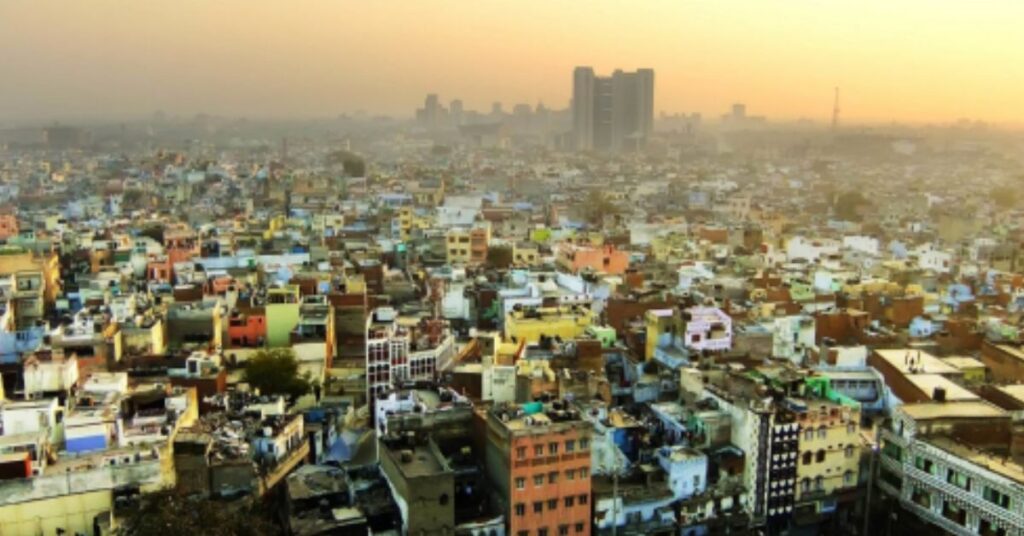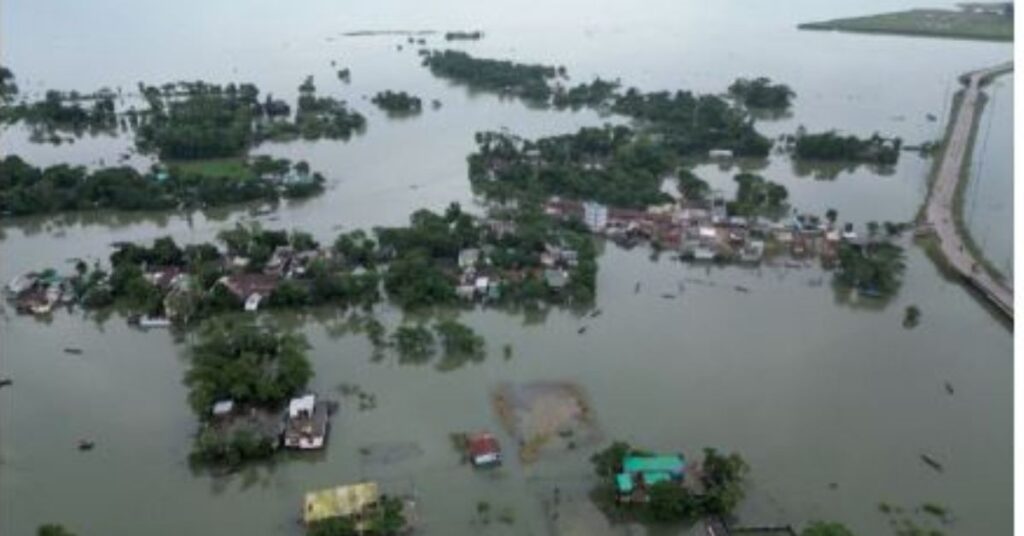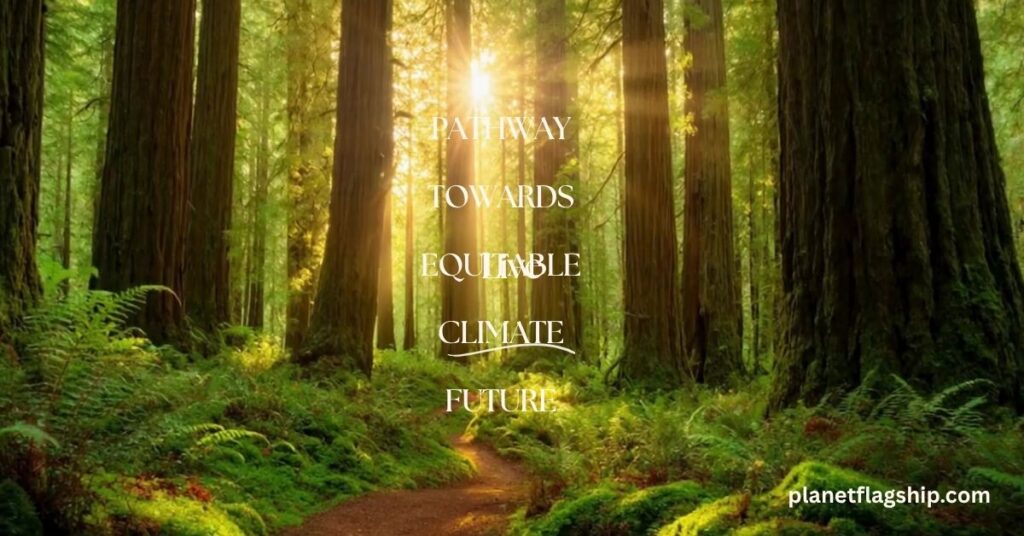Climate change is not solely an environmental issue; it is also a social and economic phenomenon that affects every segment of society. While global warming, unusual weather patterns, and rising sea levels impact everyone to some extent, the consequences are not distributed equally. The most significant burden falls on countries that are the most vulnerable, least prepared, and least responsible for creating this crisis.
This disparity between developed and developing nations is not just a concerning imbalance of resources; it poses a threat to the stability of the global community, impeding economic growth and the well-being of humanity. Climate Change and Inequality can exacerbate issues such as inadequate infrastructure, food shortages, and stagnant economies. In this article, we will examine how climate change is increasing the wealth divide between poorer and richer countries, the factors that contribute to this disparity, and how we can collaboratively address the issue on a global scale.
THE UNEQUAL IMPACT OF CLIMATE CHANGE

Less economically developed nations, often located in low-lying or tropical regions, face greater risks from climate-related threats such as
- There have been extreme weather events, including floods, droughts, and storms.
- Rising sea levels threaten both coastal populations and their infrastructure.
- The agricultural sector is experiencing disruption because of shifts in rainfall patterns and increasing temperatures.
They often lack the financial resources to build resilient infrastructure or establish effective disaster response mechanisms. In contrast, wealthier nations can invest in adaptation measures like seawalls, early warning systems, and crops that can withstand drought.
READ MORE: Dead Zones in the Ocean: How Climate Change Is Fueling a Growing Crisis
CASE STUDY: Bangladesh vs. Netherlands
Bangladesh, a low-income country with extensive coastal areas, experiences significant flooding nearly every year due to monsoon rains and rising sea levels. Its limited financial and technical resources hinder the implementation of long-term solutions, such as resilient infrastructure, advanced forecasting systems, and sustainable urban development. As a result, millions remain vulnerable to displacement, waterborne diseases, and loss of livelihood.
In contrast, the Netherlands, a similarly prosperous nation predominantly situated below sea level, has invested billions in recent years in advanced systems for water management, including dikes, storm surge barriers, and climate-adapted urban planning. These investments have not only protected its population from severe flooding but also positioned the Dutch as leaders in climate-resilient engineering. This stark difference underscores how a nation’s economic capacity influences its ability to respond to increasing climate change challenges.
INEQUALITY DUE TO ECONOMIC CONSEQUENCES
Recent research published in Science Advances in 2019 has shown that global warming has exacerbated inequality over the past five decades. The findings indicate that:
- Richer nations in cooler regions have benefited from slight increases in temperature.
- Meanwhile, less affluent countries located in hotter areas have experienced slower economic progress due to rising temperatures.
According to the World Bank, without prompt climate measures, climate change could push over 130 million individuals into poverty by the year 2030.
DEPENDENCE ON AGRICULTURE
Many low-income countries rely largely on agriculture, which is highly vulnerable to climate change. Some consequences include:
- Crop yields have been reduced due to heat stress and drought conditions.
- Food costs have increased due to disruptions in supply chains.
- Loss of income for farmers exacerbates rural poverty.
A 2021 FAO report noted that smallholder farmers produce one-third of the world’s food but receive less than 2% of global climate finance. Wealthier countries with diversified economies and advanced agricultural technology, on the other hand, are better positioned to adapt.
MIGRATION AND CONFLICT DUE TO CLIMATE

As the impacts of climate change intensify, those living in vulnerable regions feel increasingly urged to relocate. The Internal Displacement Monitoring Center (IDMC) reported that over 32 million people were forced to leave their homes in 2022 due to climate-related disasters, including floods, cyclones, and wildfires. Most of these displacements occurred in low- and middle-income countries.
This creates numerous challenges.
- Undue pressure on urban centers in lower-income countries.
- Increased likelihood of poverty for those who have been displaced.
- There is increased demand for social services and infrastructure.
RESOURCE CONFLICTS
Scarce resources such as water and land can become focal points for conflict. Regions like the Sahel in Africa have experienced rising tensions between communities as a result of prolonged droughts and competition for limited resources.
The United Nations Security Council has identified climate change as a threat multiplier, “exacerbating existing social, economic, and political tensions.
These dynamics strain national stability and demand costly interventions that many low-income nations cannot afford.
ADAPTATION AND MITIGATION GAPS
Underprivileged nations often lack the financial resources needed to invest in climate resilience. While global climate finance has increased, it remains inadequate.
The United Nations Framework Convention on Climate Change (UNFCCC) estimates that developing countries require an annual sum of $127 billion for adaptation, but the actual funding available is insufficient. The Green Climate Fund, established to support climate-related initiatives in the Global South, has faced criticism for its slow distribution process and overall lack of adequate funding, which hinders vulnerable nations from strengthening their resilience to climate impacts.
CHALLENGES DUE TO TECHNOLOGICAL TRANSFER
Advanced technologies, such as renewable energy solutions, climate forecasting tools, and water-efficient irrigation methods, are primarily available in affluent nations. Developing countries lack access to these technologies, which hinders their ability to build sustainable and resilient economies. The International Renewable Energy Agency (IRENA) emphasizes the need for inclusive energy transitions, noting that over 750 million people—mostly in developing regions—still lack electricity access.
ROLE OF INTERNATIONAL POLICIES
The Paris Agreement emphasizes the principle of “common but differentiated responsibilities,” recognizing that while all nations must take action, it is essential for developed countries to lead the way. The key provisions include:
- Support of financial aid to developing nations.
- Initiatives for building capacity.
- Methods of transferring technology.
However, the implementation has been inconsistent, and numerous pledges have yet to be fulfilled. A 2023 UN report indicated that only 18% of climate finance was directed toward adaptation, even though adaptation is a pressing need for vulnerable nations.
LOSS AND DAMAGE MECHANISMS
At COP27, world leaders pledged to establish a Loss and Damage Fund aimed at helping at-risk countries recover from the impacts of climate change. While this is a promising step, its effectiveness will depend on:
- Adequate and prompt funding.
- There should be clarity in management.
- We need support both for immediate relief and for long-term reconstruction.
PATHWAY TOWARDS EQUITABLE CLIMATE FUTURE

Mitigating climate inequality must be done as one world.
Deliver commitments made under global agreements.
Promote technology transfer to facilitate sustainable development.
EMPOWERING LOCAL COMMUNITIES
Investing in regional solutions is essential. This encompasses:
Empowering local scientists and engineers allows communities to create and implement technologies and infrastructure that can withstand climate challenges. Supporting community-led adaptation initiatives ensures solutions are tailored to local needs, culturally relevant, and more likely to succeed. Strengthening local governance and infrastructure lays the groundwork for sustainable growth, enabling communities to prepare for, address, and recover from climate-related pressures.
Educating local engineers and scientists is important. Supporting community initiatives to adapt is important. Improving local governance and infrastructure is important.
RESILIENCE THROUGH EDUCATION AND INNOVATION
Fostering climate education in schools prepares future generations to understand and tackle environmental challenges more effectively. Supporting research in climate-resilient farming can lead to innovative strategies that safeguard food security in vulnerable regions. Funding startups and non-governmental organizations that focus on sustainable practices encourages community-driven innovation and enhances local capability to respond to climate change.
FAQ’s
Why does climate change affect poor countries more than rich ones?
Poor countries often rely on climate-sensitive sectors like agriculture and fishing and lack the financial resources to adapt to extreme weather events. In contrast, wealthy nations can invest in advanced infrastructure, technology, and disaster preparedness, reducing their vulnerability to climate shocks.
How is climate change increasing global inequality?
Climate change slows economic growth in developing nations by damaging crops, infrastructure, and livelihoods, while some wealthier nations in cooler regions benefit slightly from rising temperatures. This imbalance deepens poverty and widens the global wealth gap.
What role does climate finance play in reducing inequality?
Climate finance funding from developed to developing nations—is vital for helping poorer countries adapt to climate impacts. However, the current funding is far below what’s needed, leaving vulnerable nations without sufficient resources to protect their people and economies.
How can international cooperation help narrow the climate gap?
Global collaboration through initiatives like the Paris Agreement and the Loss and Damage Fund can ensure fairer support, technology transfer, and shared responsibility. Developed nations must uphold their commitments to aid and invest in climate resilience for vulnerable regions.
What actions can individuals take to support climate equality?
Individuals can advocate for stronger climate policies, support sustainable businesses, and reduce their carbon footprint. Small actions like using renewable energy or supporting fair-trade products collectively contribute to a fairer and more sustainable global future.
CONCLUSION
Climate change is not merely an environmental issue; it is a catalyst for global inequality. Countries with fewer resources, despite being the least responsible for the problem, are facing the most severe consequences. The effects of climate change, including economic burdens, food scarcity, displacement, and conflict, are widening the divide between affluent and impoverished nations.
However, this trajectory is not predetermined. Through effective global cooperation, increased financial support, and a commitment to fairness, we can work towards a more equitable and sustainable future. Governments, organizations, and individuals must act decisively to combat climate change and ensure no one is overlooked.
Everyone has a role to play. Whether it has been advocating for more aggressive climate initiatives, funding sustainable enterprises, or making environmentally conscious choices in our daily lives, each action has significance. The power to shape the future remains with us.
REFERENCES
Adaptation Gap Report 2022. (n.d.). UNEP—UN Environment Programme. https://www.unep.org/resources/adaptation-gap-report-2022
Climate Change 2022: Impacts, Adaptation, and Vulnerability. (n.d.). IPCC. https://www.ipcc.ch/report/ar6/wg2/
Hallegatte, S. (2016). Shock waves: managing the impacts of climate change on poverty. World Bank Publications.
IDMC | GRID 2023 | 2023 Global Report on Internal Displacement. (n.d.). https://www.internal-displacement.org/global-report/grid2023/
Hallegatte, S., & Rozenberg, J. (2017). Climate change through a poverty lens. Nature Climate Change, 7(4), 250-256.

John is a professional blogger and passionate advocate for environmental sustainability. With years of experience exploring eco-friendly practices and green innovations, he shares insightful articles on Planet Flagship to inspire a sustainable future. John’s expertise lies in making complex environmental topics accessible and actionable, empowering readers to make meaningful changes for the planet.
